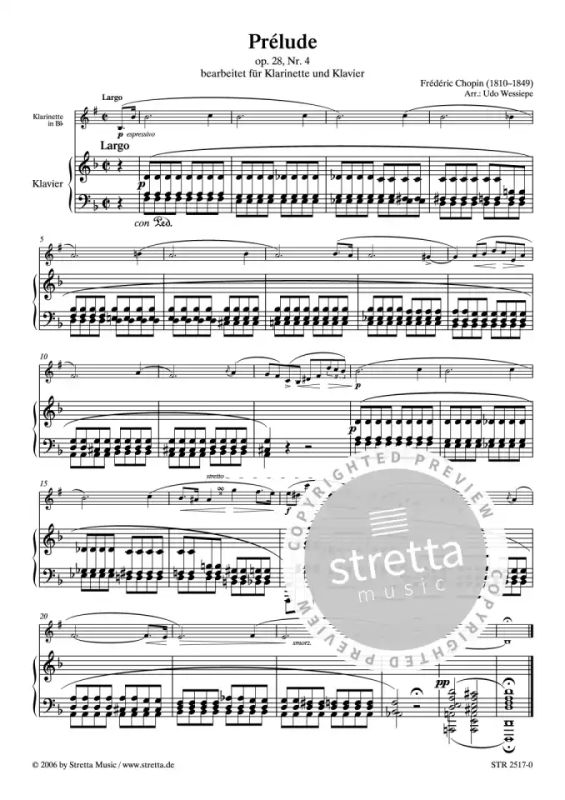
Shorter than Section A and B b about half. Total different idea compared to section A or B. This section of the Prelude links section B back to section A. This section is also quite expressive through the dynamics mainly: how the crescendo builds tension and almost explodes as it hits the chord of E and B. Left hand slurs and have crochet notes that rise adding to the build-up. Crescendos being used to build tension when it is released as the dynamics go fortissimo. Key changes to C sharp minor: repetitive A flat goes to a G sharp note. This represents the raindrop motive making it sound like the raindrops are falling. The raindrop can also be heard with the first three notes played in this piece: F, D flat and A flat. As a pianist that can play this piece, this section in some ways is the most expressive with the main use of rebarto and graduate crescendos (to mezzo piano). Section A is a very delicate section which the whole time i in piano (soft). The use of spreading arpeggios in the left hand. Has graceful ornamentations (decorations) which also use rebarto (slows down tempo because decorations are expressive). Uses the pedal to product lots of subtle pedalling effects. Repetitive use of A flat in left hand (quaver notes). Time signature is in 4/4 and in the key of D flat major. In the piece, this is represented by the continuous repeating A flats in section a and the continuous repeating G# in section B where the key changes to C# minor. The piece was written during a storm and the title relates to the dripping of raindrops from the roof of the monastery. The ‘Raindrop’ Prelude was written during Chopin’s period of recuperation as the deserted monastery in Valldemossa, Majorca. Each prelude is meant to depict a specific idea or emotion. We expect the prelude to be followed by something else! But, the 24 Chopin pieces are all stand-alone preludes, each in a different major and minor key. The ‘Raindrop’ Prelude is one of the longest at 9 bars, and in it we can see a clearly worked out ternary ABA structure with a contrasting B section in C# minor.Ī prelude is a brief ‘opening’ piece that sets a particular mood and is linked to a following fugue in the same key. This Prelude, more commonly known for ‘Raindrop’, belongs to a body of works by Chopin called The Preludes, which was written between 18 to then be published in 1839. Now, let’s have a look at his Piano Prelude No. Chopin was born in Poland and reflected his love for his homeland of Poland through the use of Polish folk melodies and dance rhythms. 
Chopin was a fitting example of the Romantic artist – he was lonely, aloof and withdrawn – a talented but tragic figure, dying as he did at a relatively young age of 39. However, Chopin disliked descriptive titles and he did not devise this nickname.Chopin’s piano music is a perfect example of the Romantic ideal for expressing the poetic feelings and emotions through the medium of sound. It is often said that this refers to the persistent repeated notes (A♭) which sound like rain falling. Many also have nicknames like the Raindrop. The preludes also have contrasting tempos and range from lento to presto. Chopin’s 24 preludes can be performed individually or as a set.Įach prelude has different musical characteristics.


In previous musical periods, the prelude was an introduction to another movement, for example in Bach’s 48 preludes and fugues. The PreludeĬhopin’s preludes were highly innovative. Prelude No.15 in D♭ major, also known as the ‘Raindrop’, is taken from this set of preludes and completed in 1839. The preludes are short pieces of music and can be performed as a set or on their own. Many of his piano solos were based on the dances waltz, bolero and tarantello, and included the Polish dances polonaise and mazurka.Ĭhopin wrote a set of 24 preludes for solo piano, one in every major and minor key. Polish folk tunes and native dance forms influenced Chopin’s piano writing. Features of his music include the use of ornamentation, the use of rubato, the complex division of beats, extensive use of the pedal and, above all, lyrical and expressive melodies.
#CHOPIN PRELUDE 15 FULL#
He composed 24 preludes, 27 études (or studies) 21 nocturnes, four impromptus, two piano concertos and many more pieces for smaller ensembles.Ĭhopin transformed piano writing by exploring the full potential of the instrument. However, Chopin suffered from ill health during his lifetime and died in Paris at the age of just 39. Originally from Poland, Chopin made a name for himself in Vienna before settling in Paris. As a virtuoso pianist himself, Chopin wrote primarily for solo piano and revolutionised piano writing through his techniques. Born in 1810, Chopin is one of the most influential composers and pianists from the Romantic period.







 0 kommentar(er)
0 kommentar(er)
